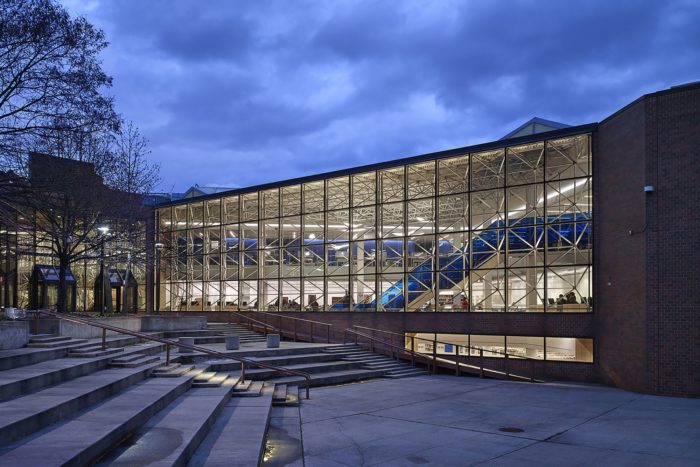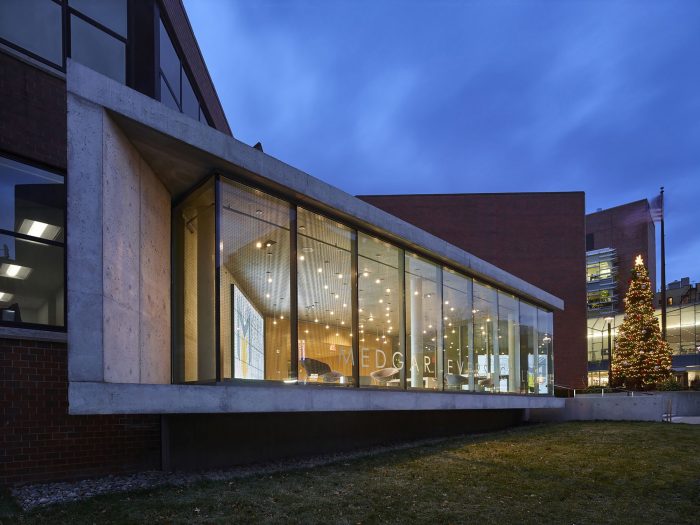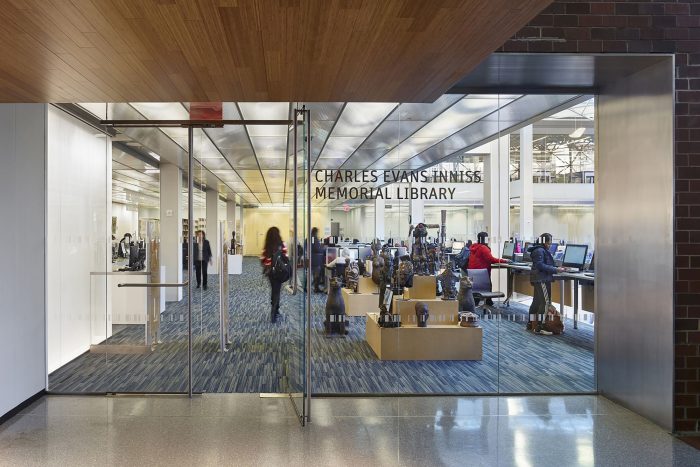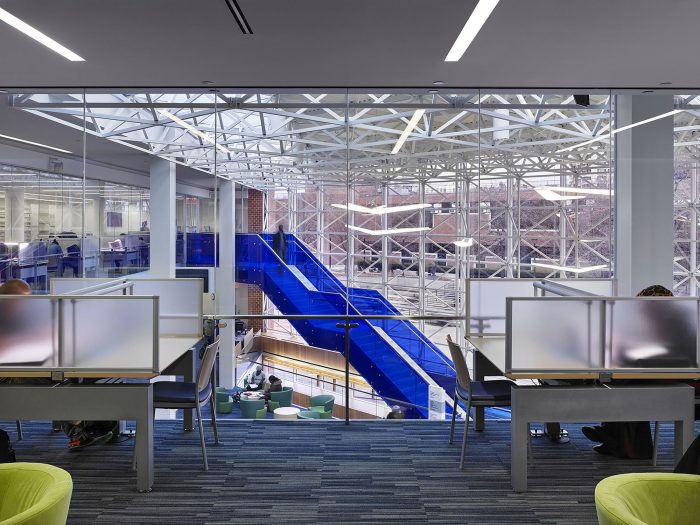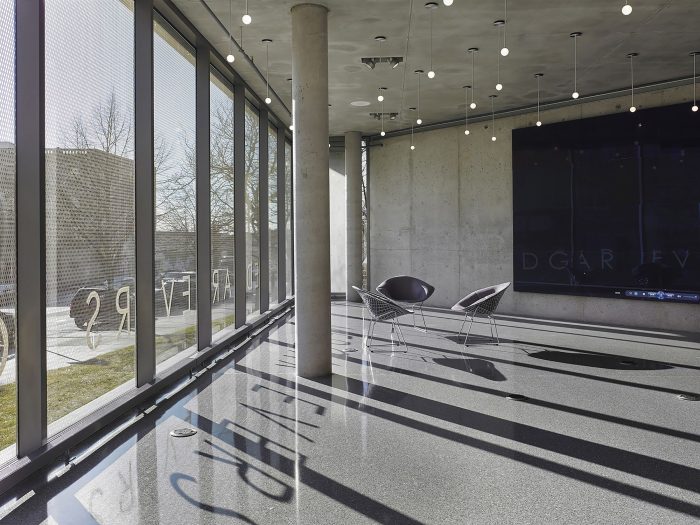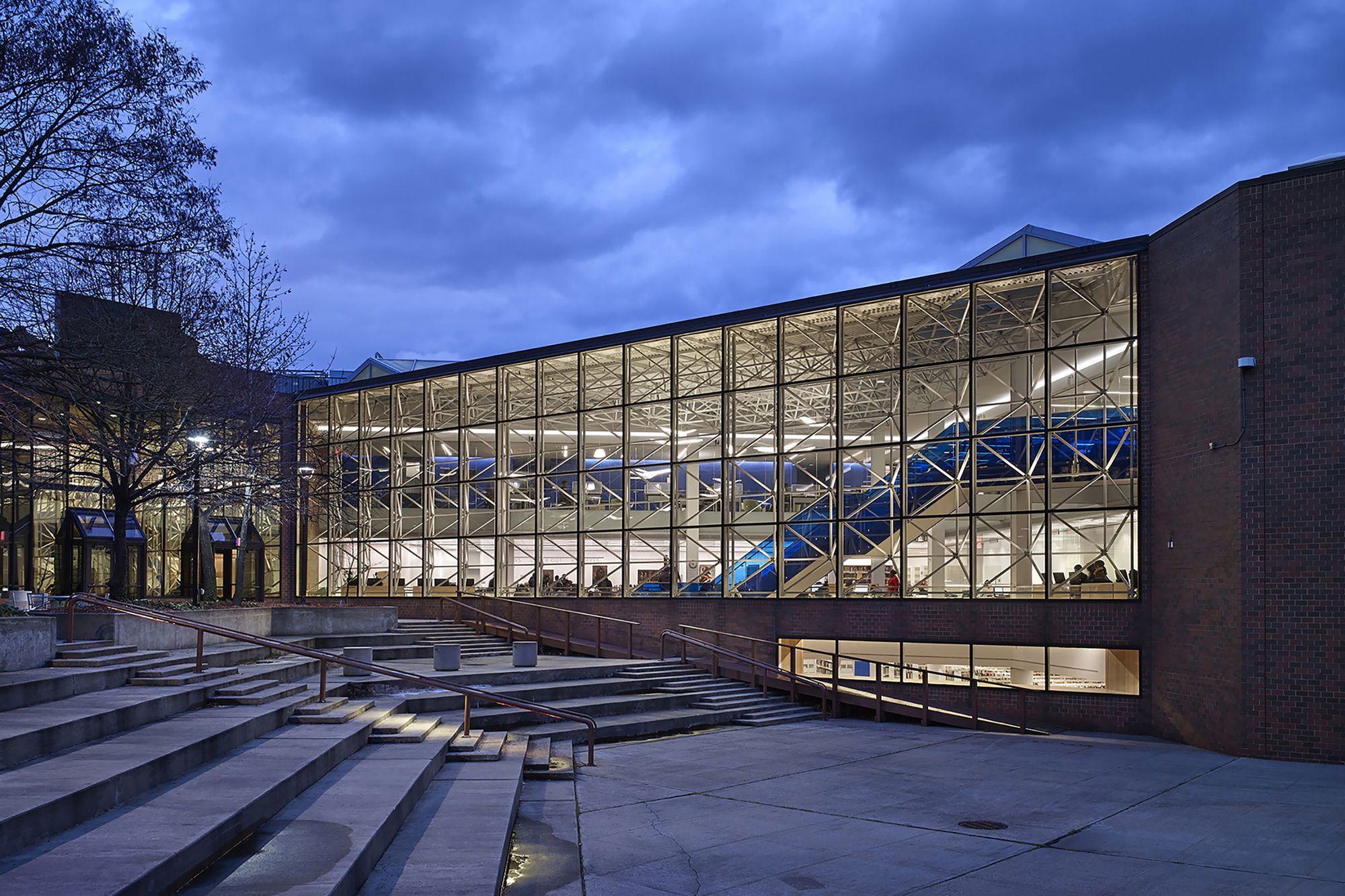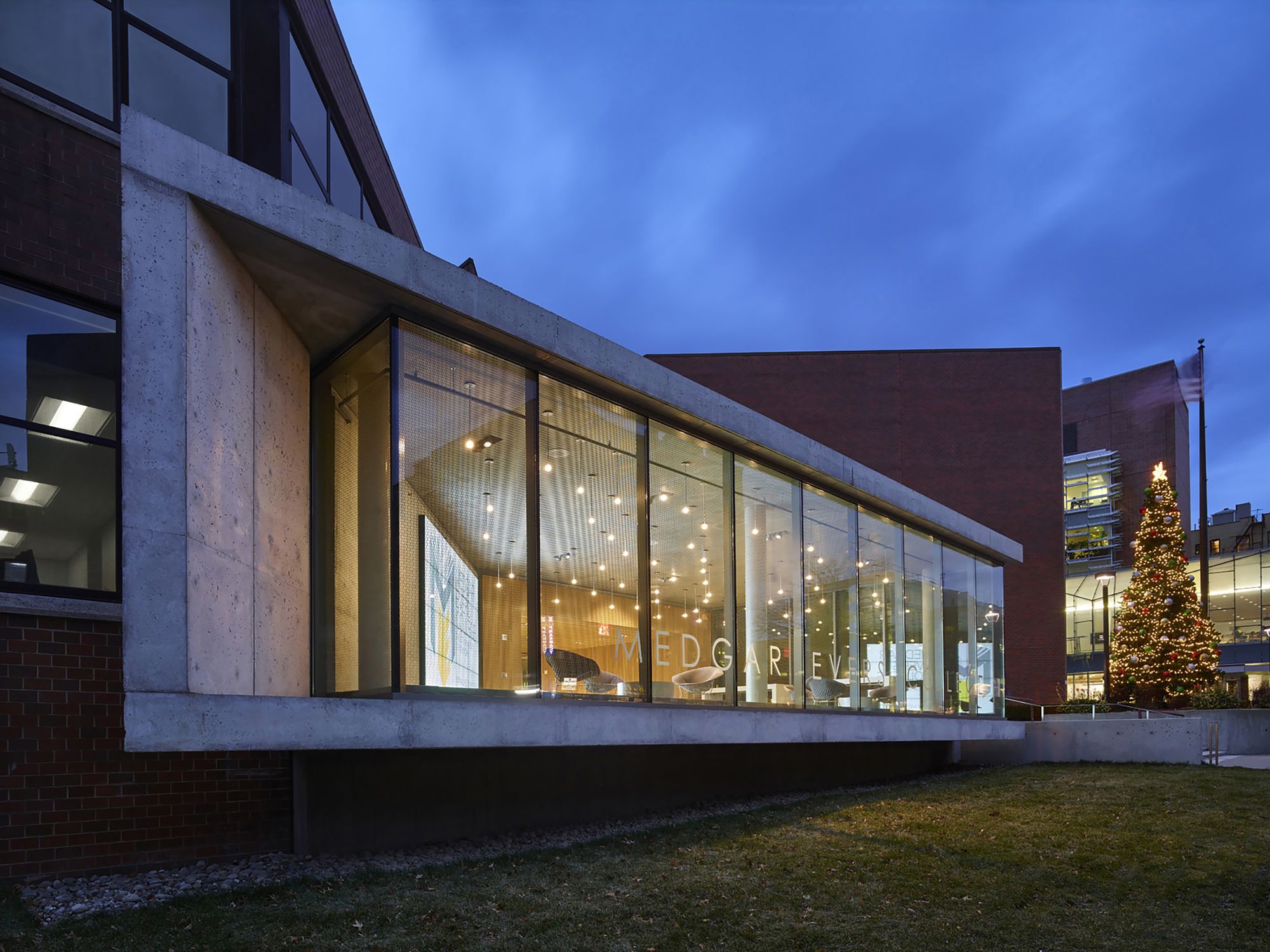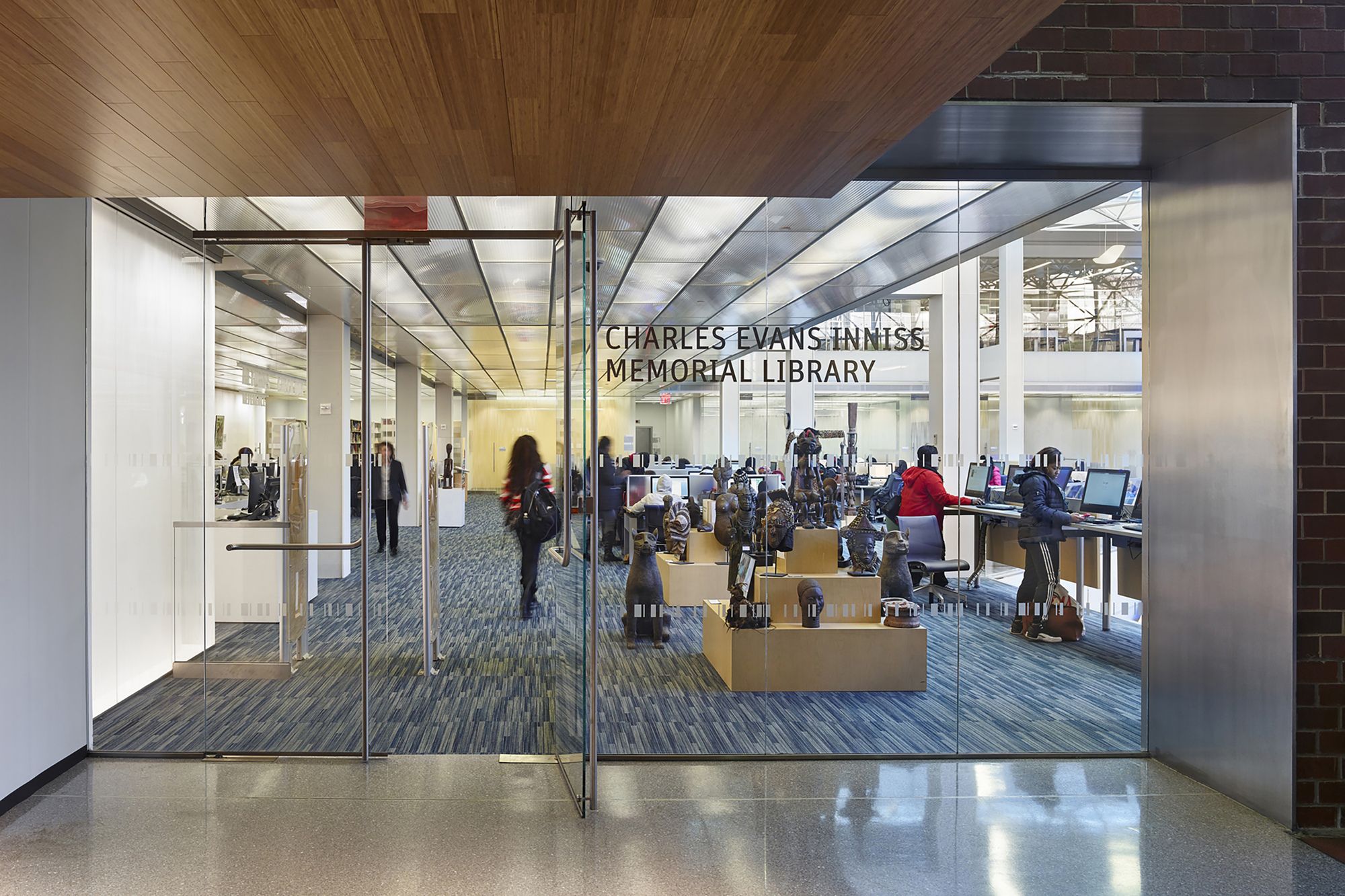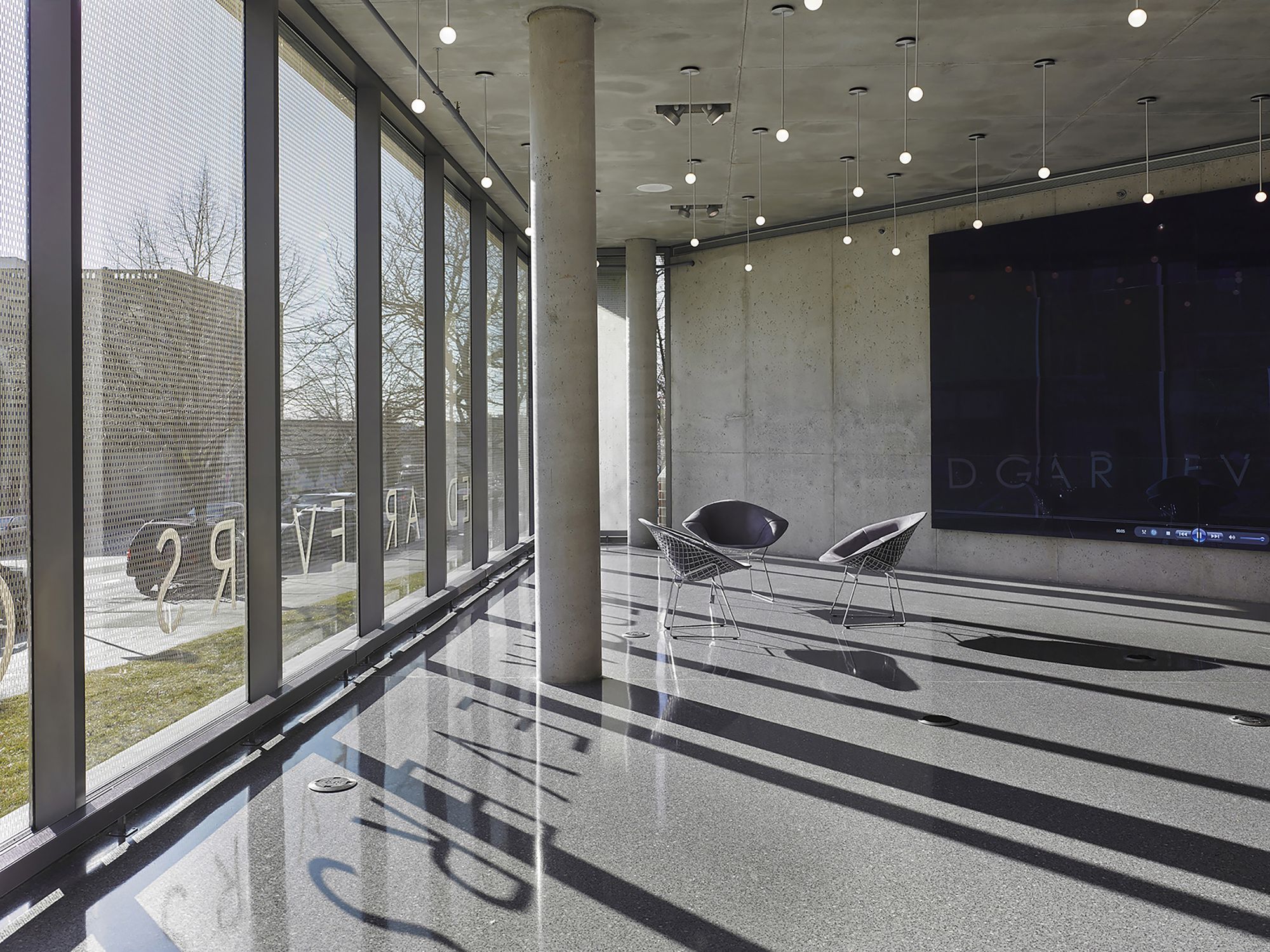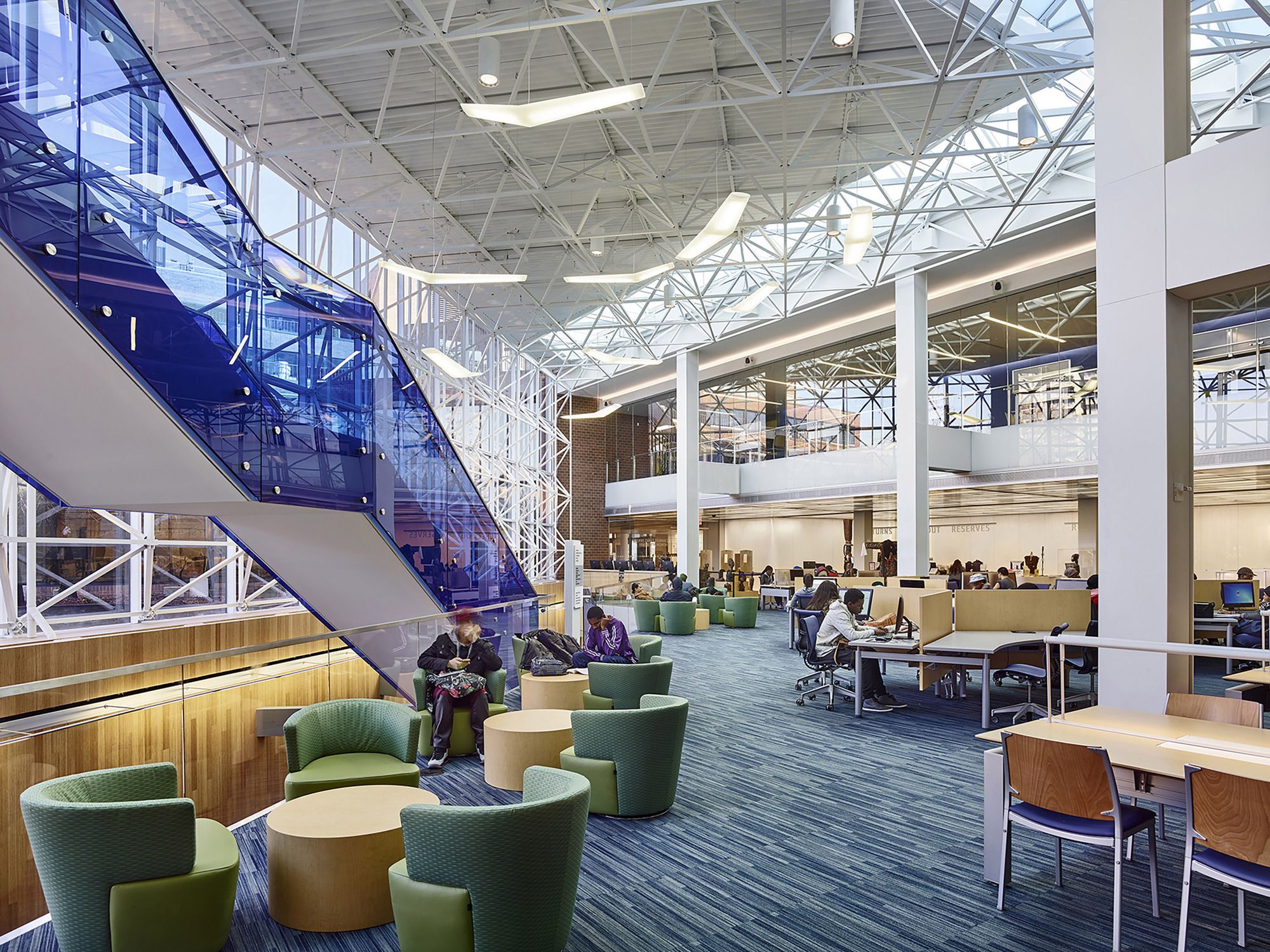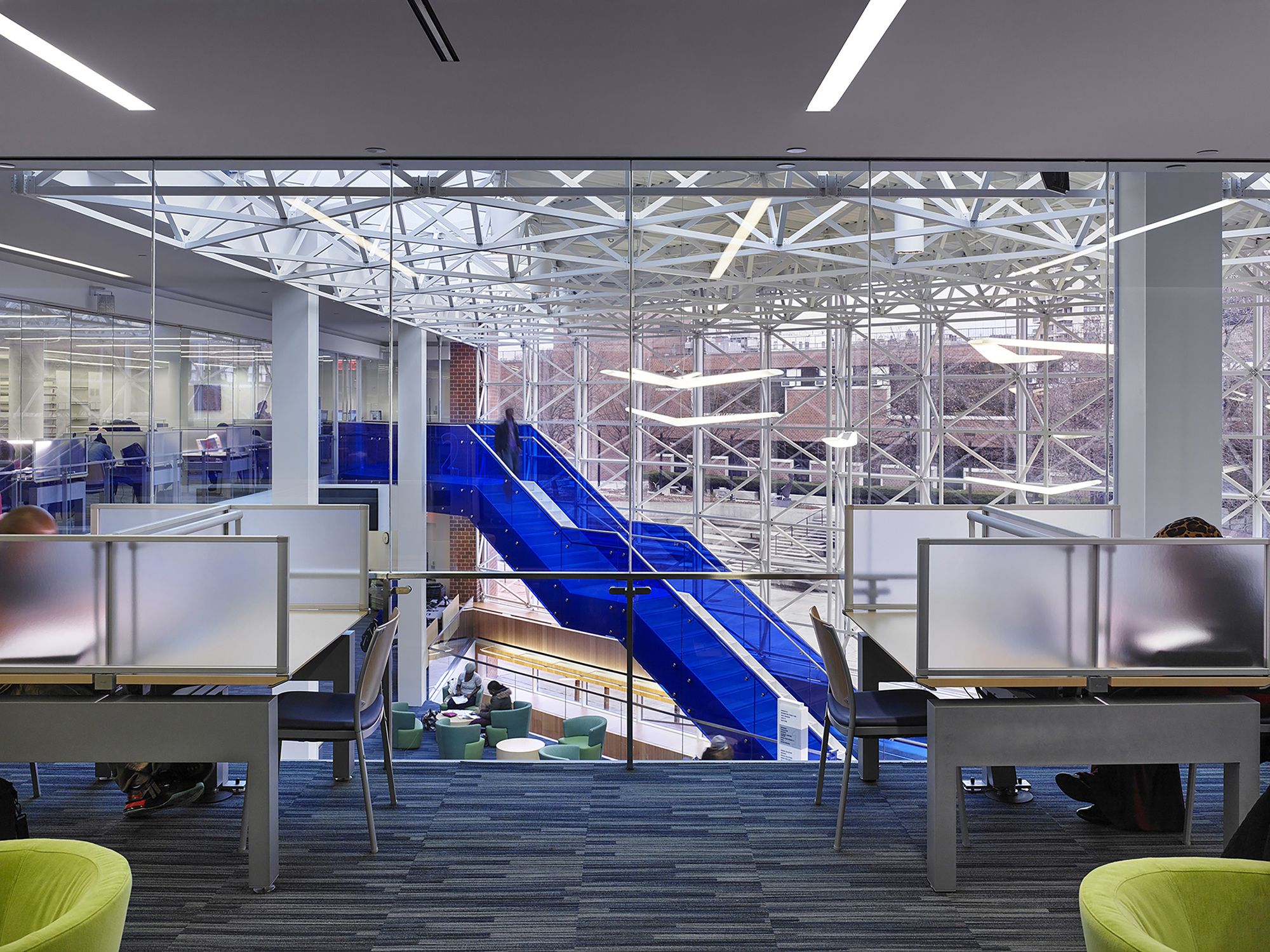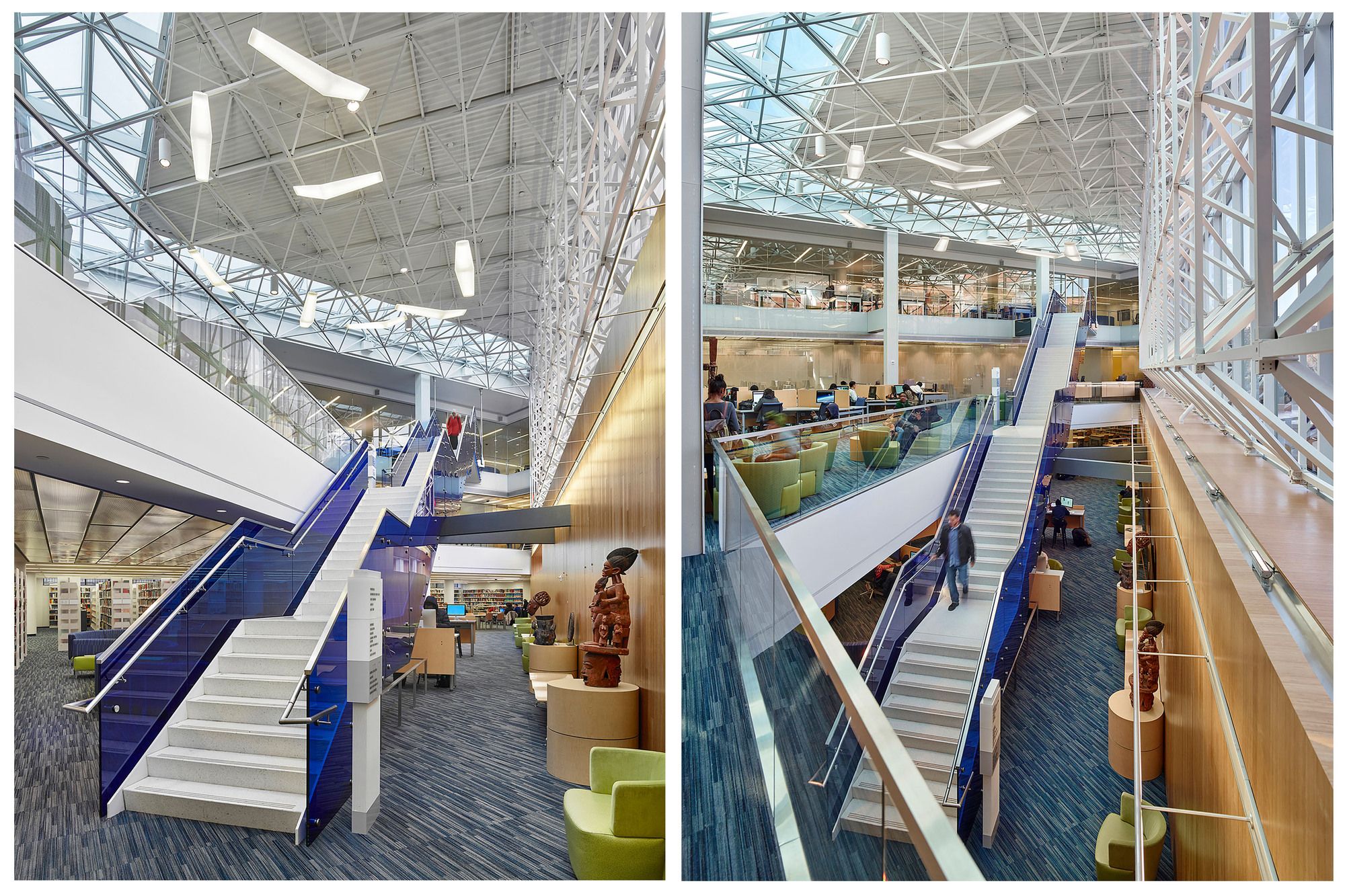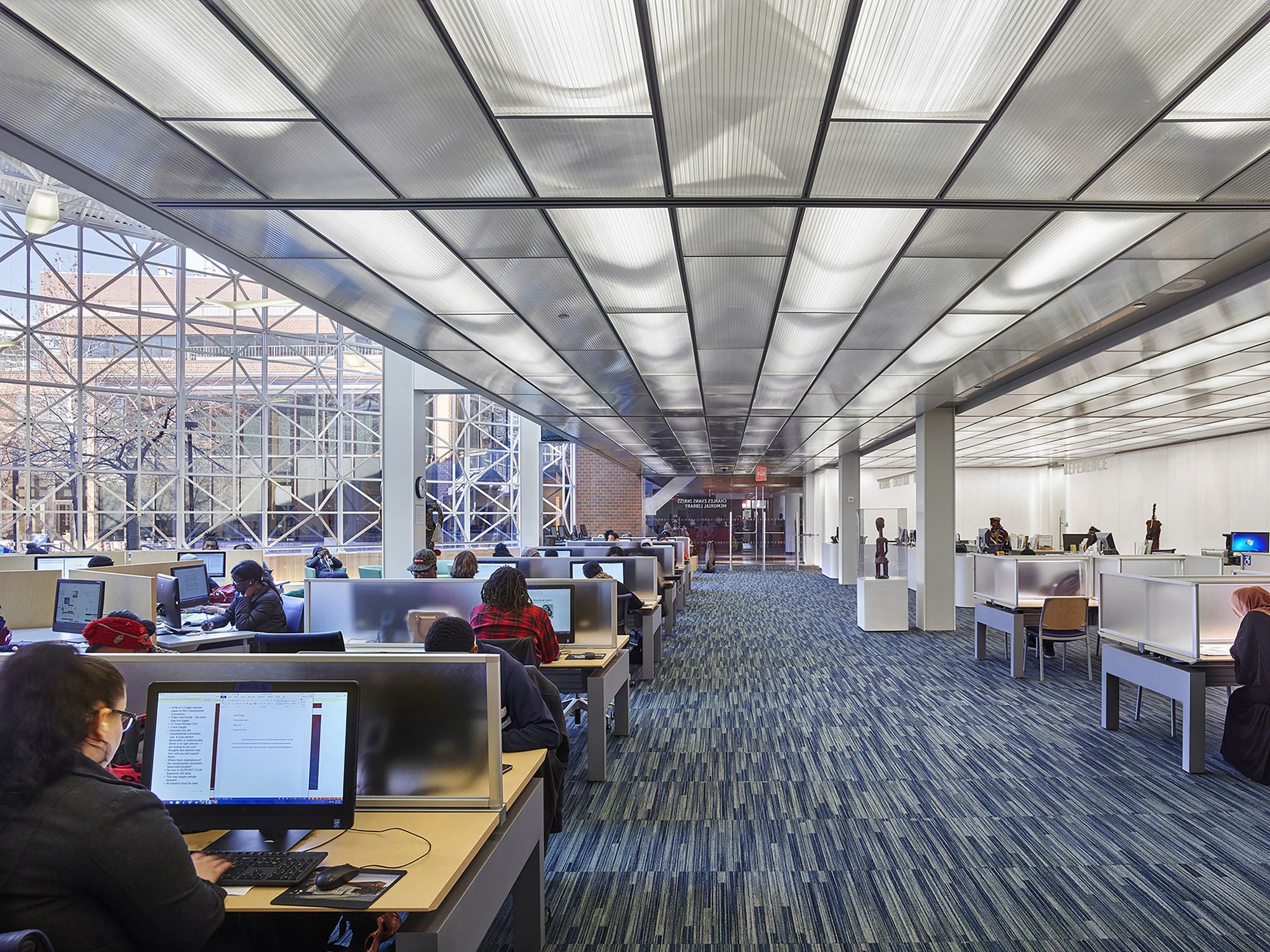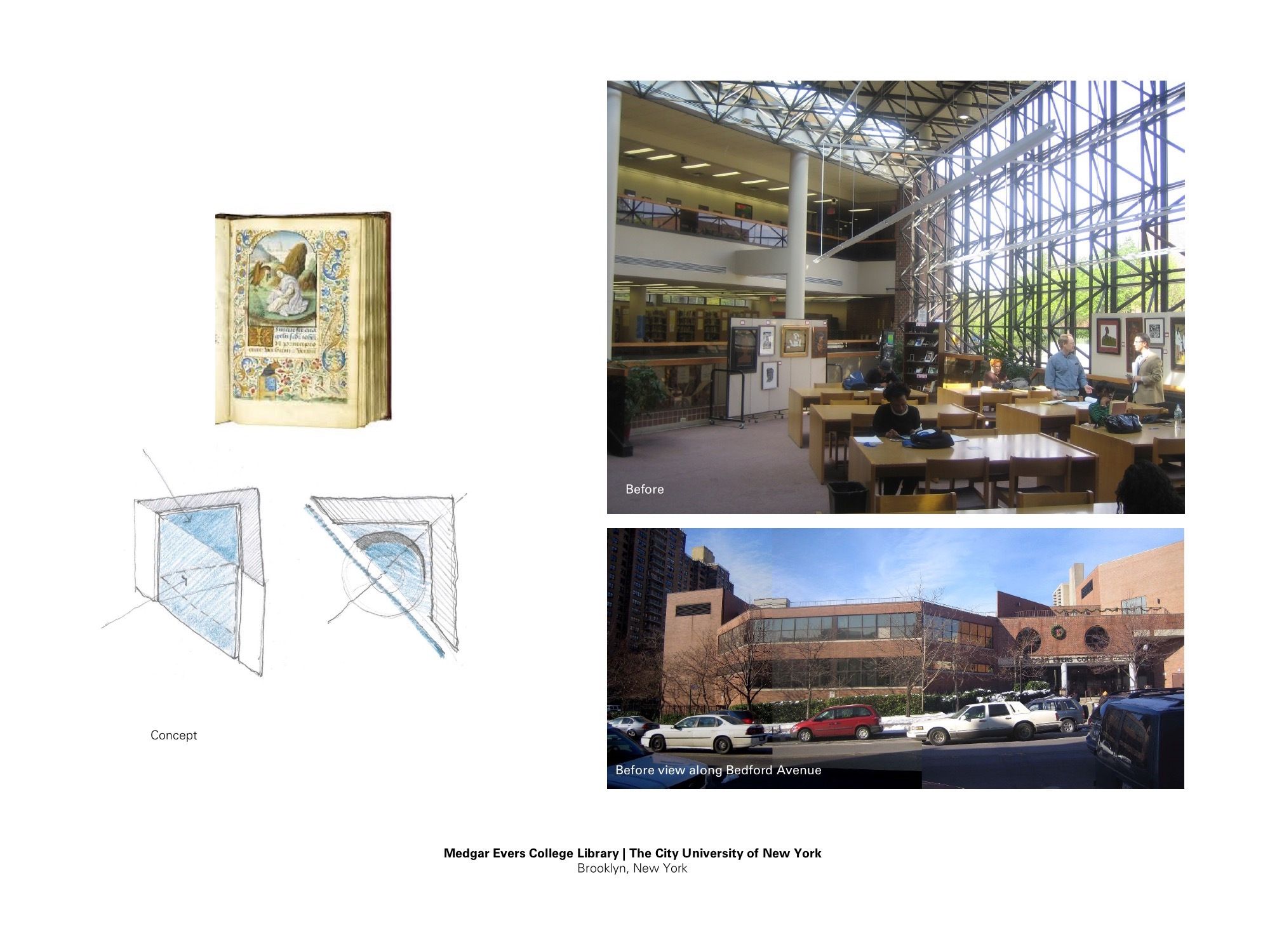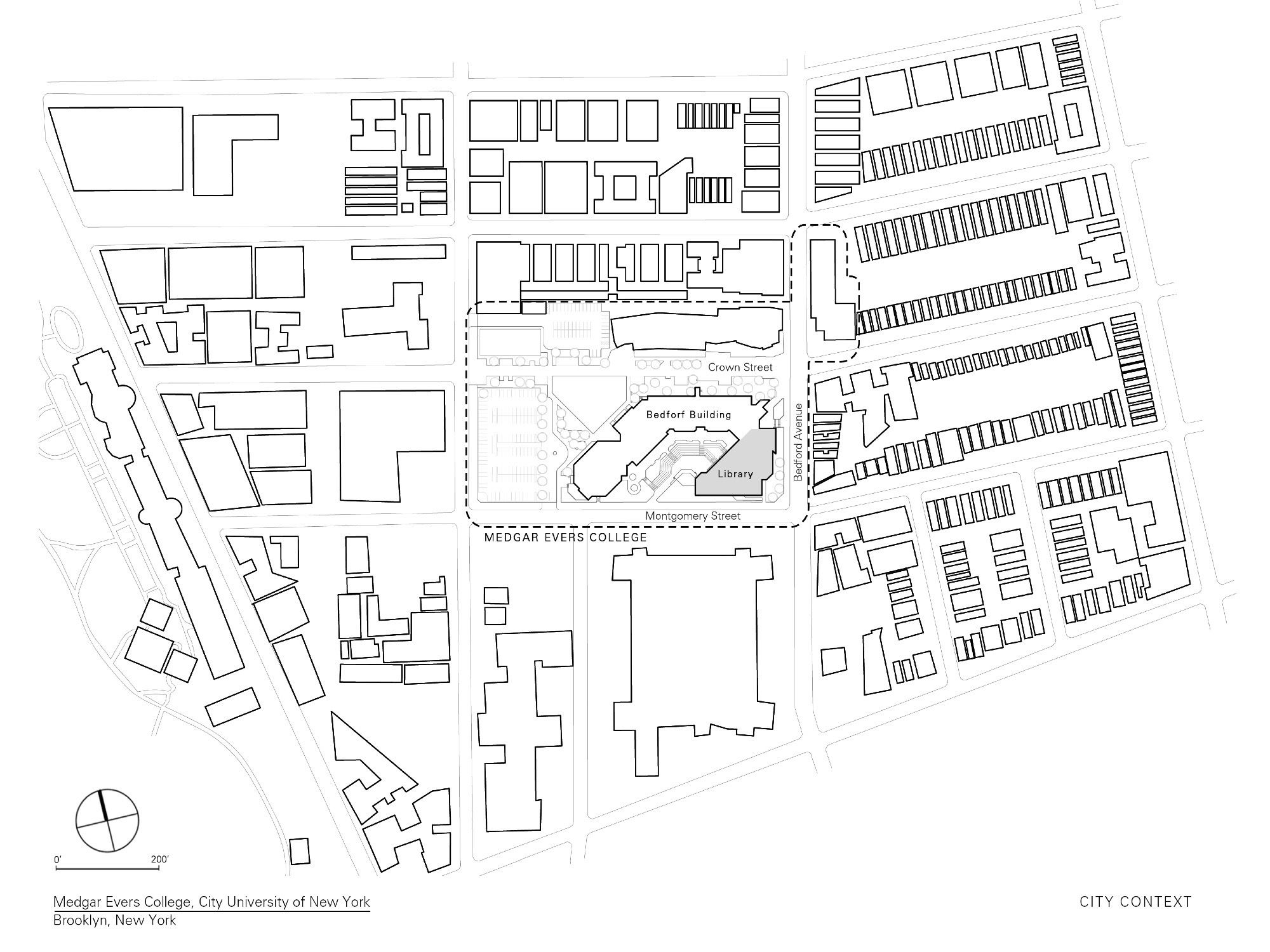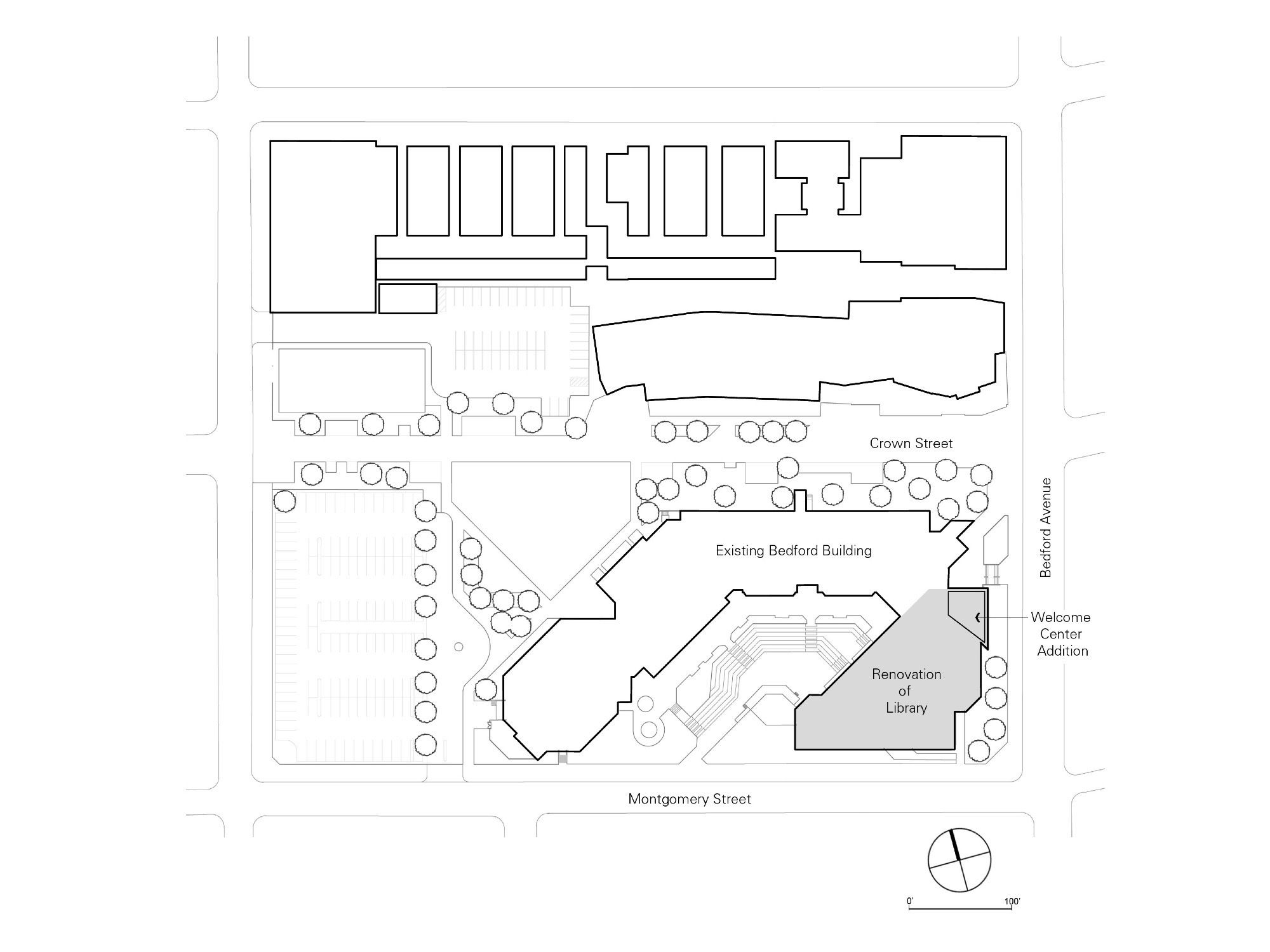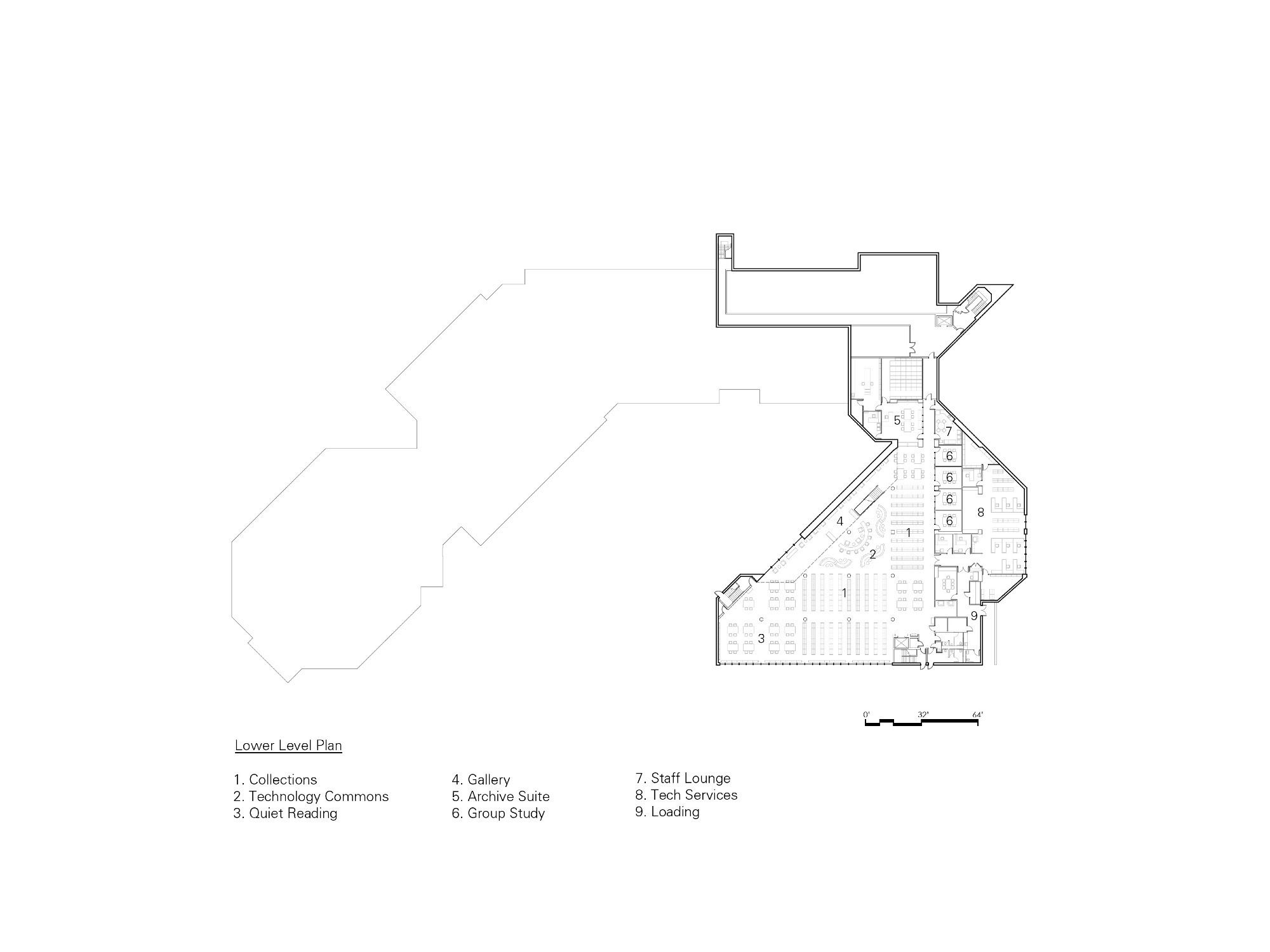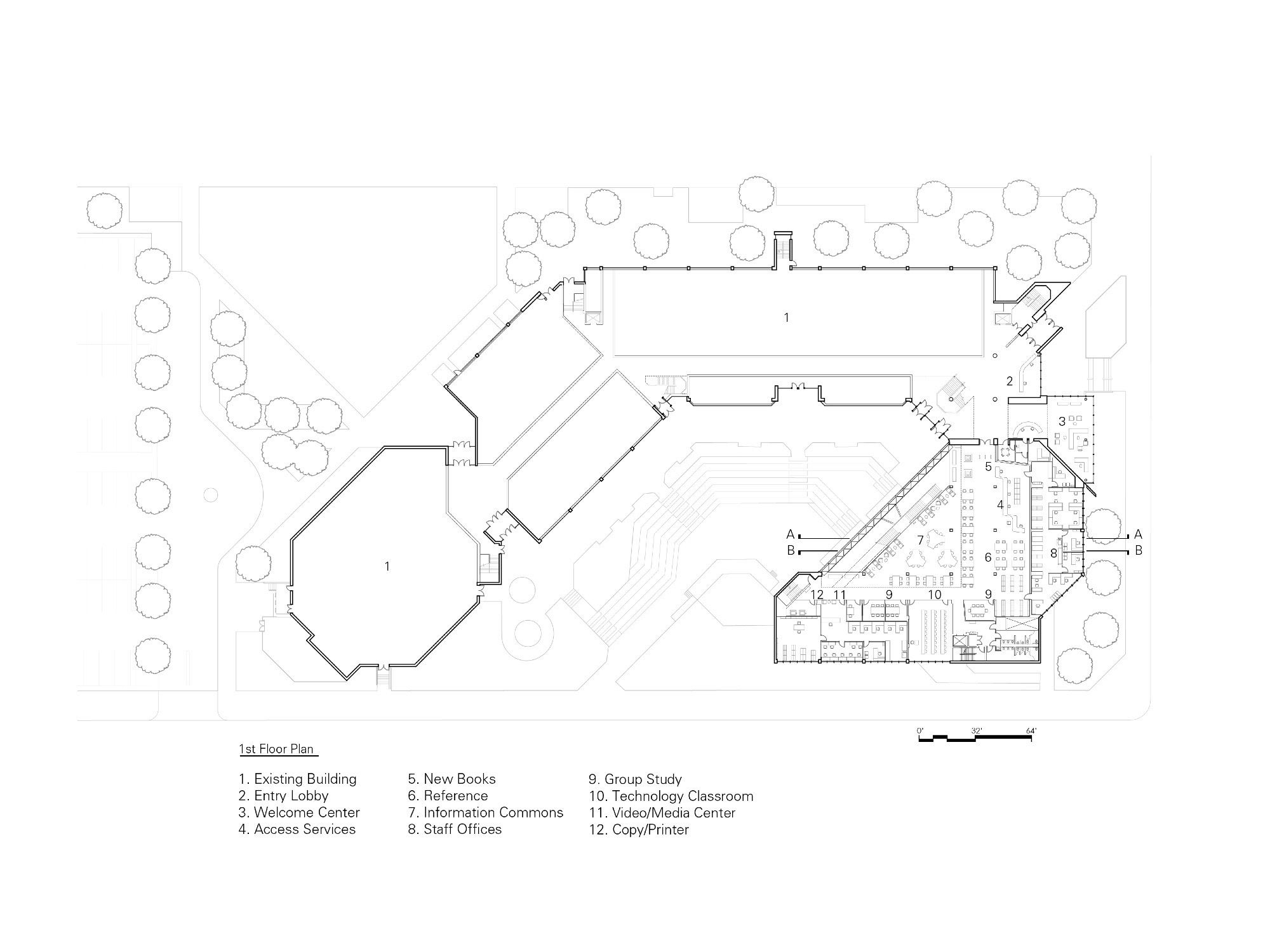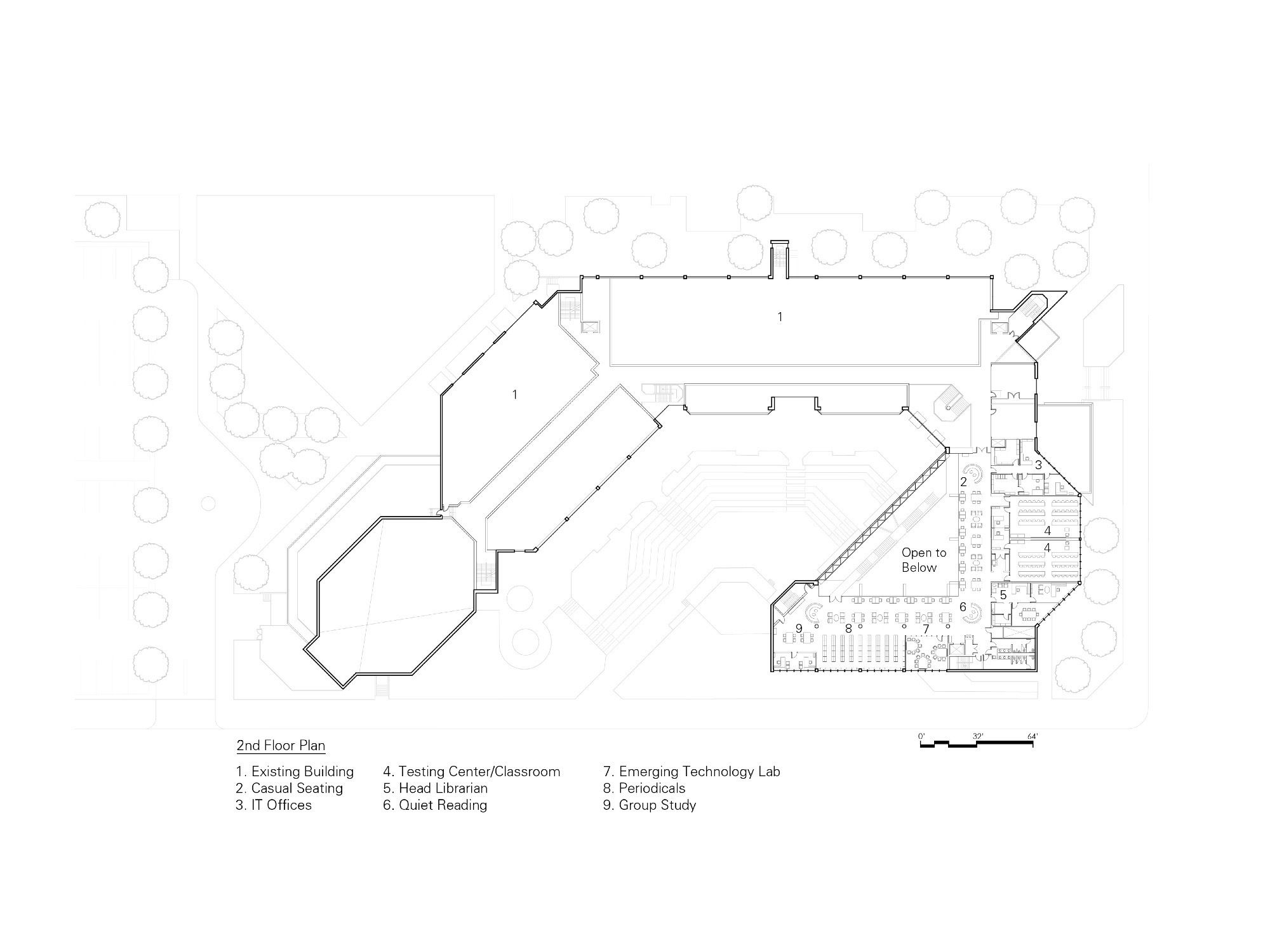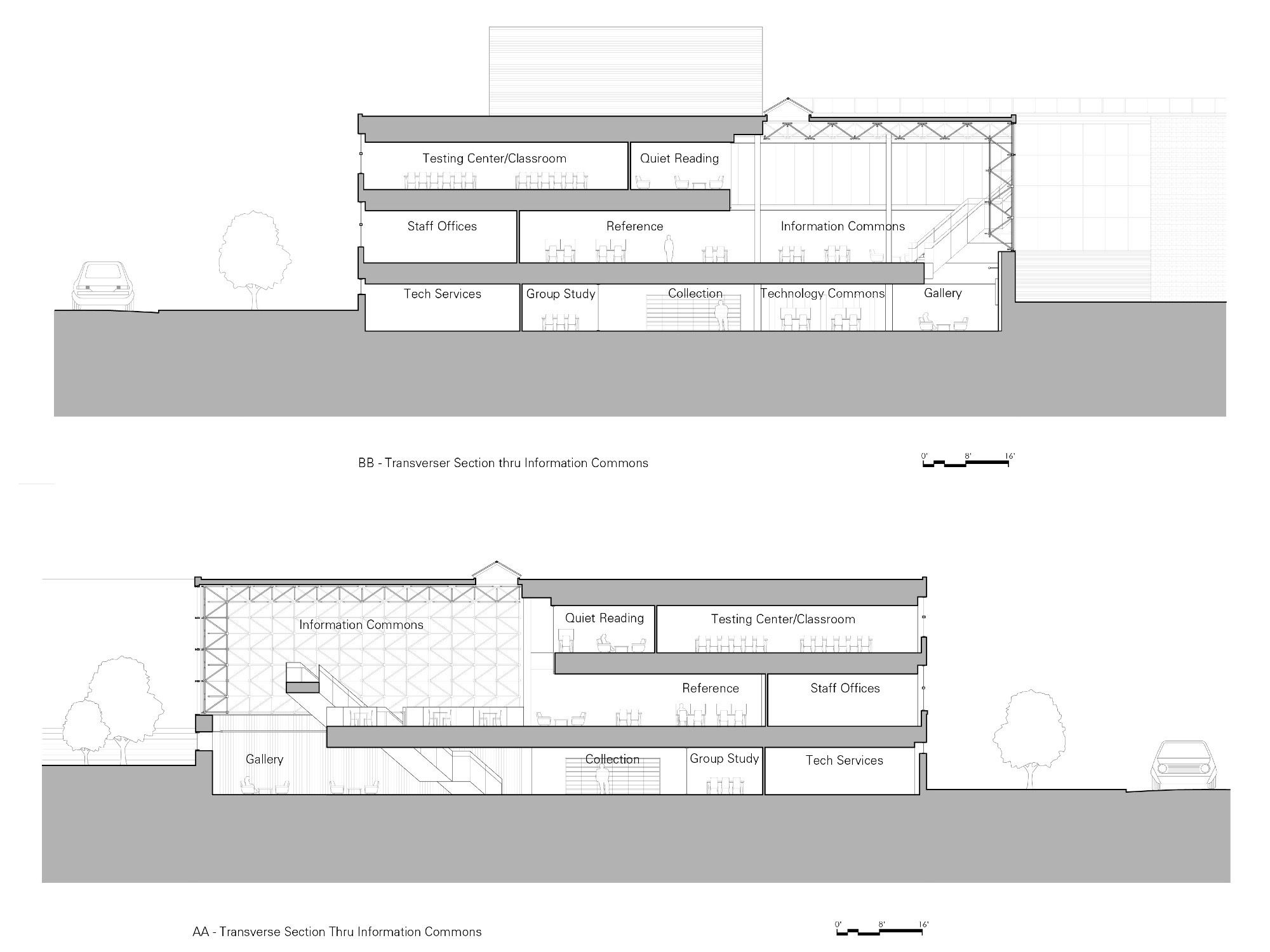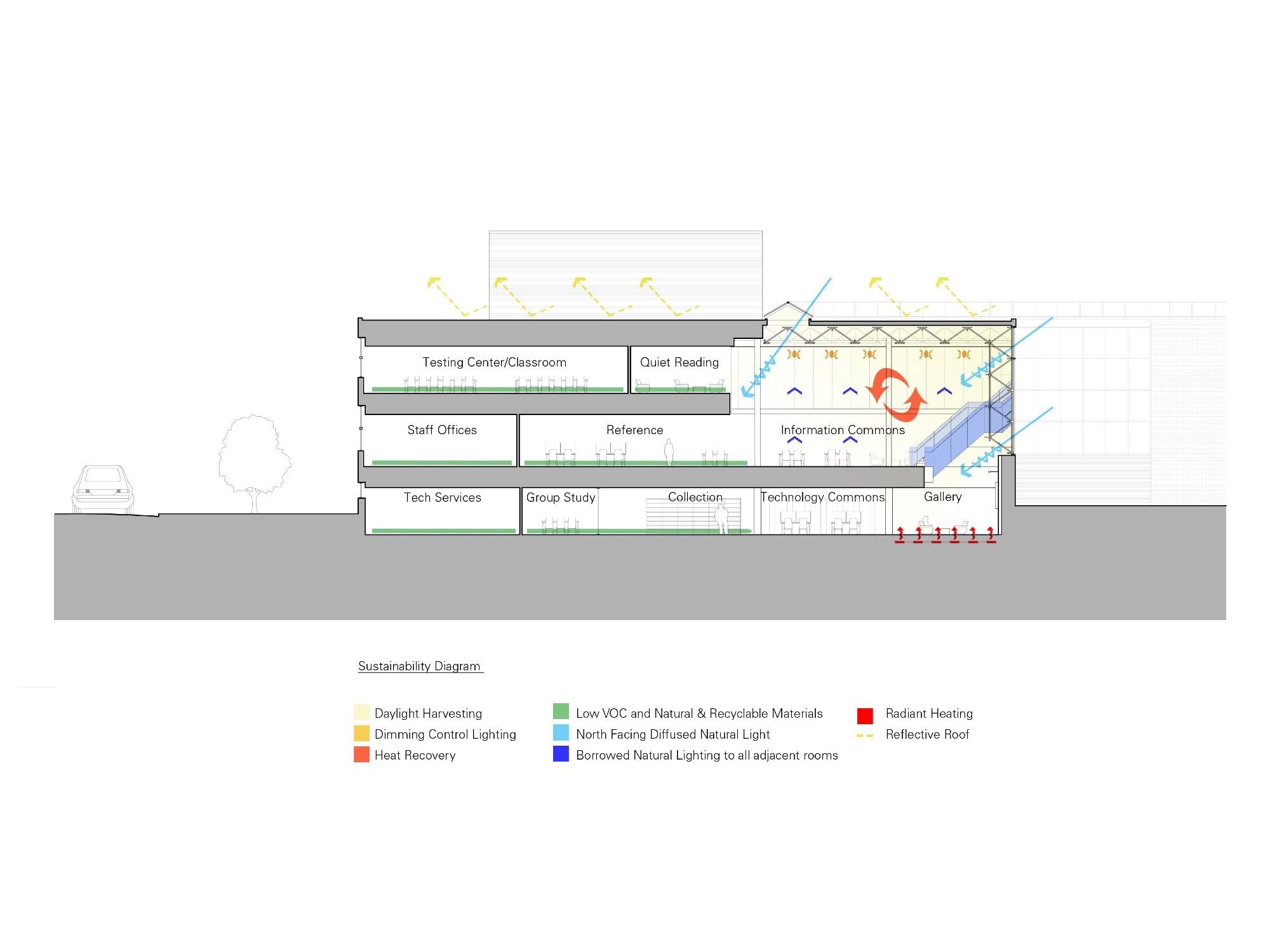Medgar Evers College Library
Set within the existing Bedford building of The City University of New York, the Medgar Evers College Library renovation transforms an existing 45,000 square foot traditional library into a modern information commons. A new addition, located adjacent to the library, adds a glassy 2,000 square foot welcome center that gives the library a civic presence on the street while providing a new front door to the College along Bedford Avenue.
The concept for the renovation is inspired by the brilliant and reflective pages of illuminated manuscripts and their modern counterpart, the computer screen. Treating each interior surface as a bright reflective page, the renovation transforms the former dark and shadowed space into a bright and airy learning environment that takes advantage of an existing north facing two story glass wall and space frame to admit light deep within the building. Natural light enters the three story space from north facing windows and an overhead skylight to illuminate the space frame, interior surfaces, sculptural stair, group study rooms and offices. A new three story opening along the north facade and new sculptural staircase physically and visually link all three levels. The opening increases the legibility of the space and hence the building’s clarity by allowing the visitor to see the various program functions of the library from the entry. The result is a light-filled inspiring information commons with adjacent study and classroom spaces.
In addition to the interior transformation of the space, the renovation completely transformed the program of the library. Built in the early 1980’s, just before the advent of the computer revolution in libraries, the Medgar Evers library was designed as a traditional collection and study space relying on the isolated individual scholarship model for learning. While individual study spaces and book collections are still available, the renovation transforms the functions of the library into a modern information commons that supports collaborative learning. Significant to this transformation is the reclamation of under-utilized storage space on the lower level for the less public functions such as, technical services, special collection storage and the traditional book collection. This approach freed up space on the main and second floors for more collaborative study areas and technology driven classroom spaces.
The renovated library provides for collaborative technology workstations adjacent to staff reference and nearby help desks. Supplementing the information commons on the main level are group study rooms, a media center and casual seating throughout. Previously the library provided ten computer workstations. The new space now provides 42 computer workstations on the main level, 15 computer workstations on the lower level and access to power and data at every seat. In addition to the information commons, 10 group study rooms, an emerging technology center, testing and advising classrooms, special collections archives and gallery are provided. These additions were possible within the existing structure by reducing and placing the most important collections in compact mobile storage, thus freeing up valuable floor area for program use.
The renovation incorporates a number of sustainable features in order to reduce energy consumption and improve interior environmental quality. The north facing glass wall permits diffused natural light to enter the library and photo optic dimming system monitor light levels and keeps artificial lights off for most of the daylight hours. All enclosed rooms have glass partitions oriented toward the information commons to borrow natural daylight throughout all spaces of the building. Reflective roofing reduces heat gain on the facility and a new high performance heating ventilation and air conditioning system vastly improves energy consumption. Recyclable backed carpet, bamboo wood flooring and paneling, low VOC paints and LED lighting are used throughout to improve the quality of the interior environment.
Architects: ikon.5 architects
Location: United States, Brooklyn, NY, USA
Design Team:
Joseph G. Tattoni, FAIA / Arvind Tikku, AIA / J. Daniel Cummings, AIA / Michael Herbst, AIA / Benjamin J. Petrick, AIA
Area: 45000.0 ft2
Project Year: 2016
Photographs: Jeffrey Totaro
Photography by © Jeffrey Totaro
Photography by © Jeffrey Totaro
Photography by © Jeffrey Totaro
Photography by © Jeffrey Totaro
Photography by © Jeffrey Totaro
Photography by © Jeffrey Totaro
Photography by © Jeffrey Totaro
Photography by © Jeffrey Totaro
Scheme
Location
Site Plan
Lower Level Plan
1st Floor Plan
2nd Floor Plan
Sections
Diagram


